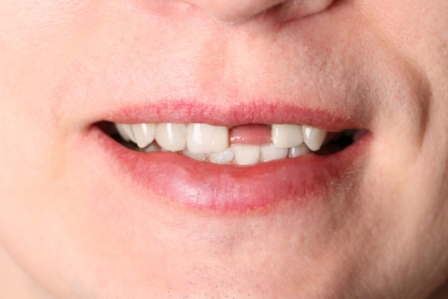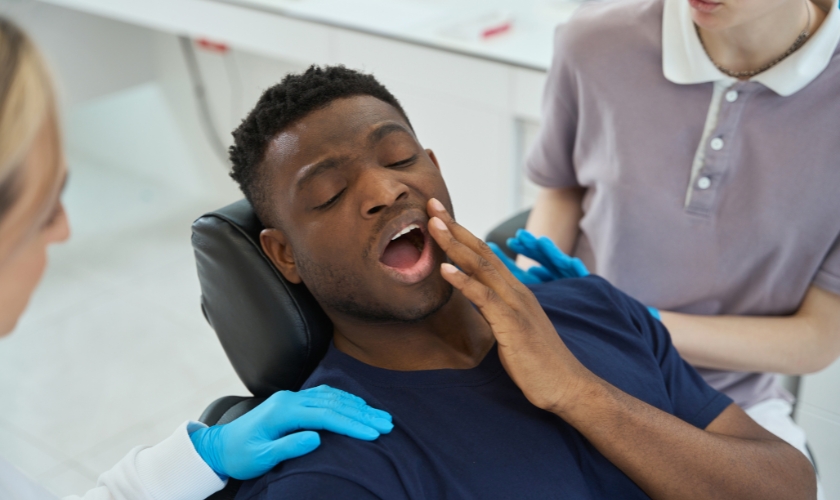
Losing a tooth can be a shocking experience, whether it happens during a game, a fall, or an accident.
Your first reaction might be panic, but don’t worry!
Acting quickly can make a significant difference. How you handle a knocked-out tooth until you reach the dentist can influence whether you save it or not.
In this blog, we’ll explain the crucial steps to take immediately after a tooth gets knocked out. You’ll learn how to safely handle and store the tooth, recognize signs of complications, and manage any pain you may feel. Understanding these steps can empower you to act confidently in a stressful situation.
So, let’s dive into what you need to do to give your tooth the best chance of being successfully re-implanted!
Understanding Tooth Avulsion
Tooth avulsion occurs when a tooth is completely knocked out of its socket. This can happen due to various reasons, such as sports injuries, accidents, or falls. Both primary (baby) and permanent teeth can be avulsed, but the implications vary. Losing a primary tooth can be less concerning, as it will eventually be replaced. In contrast, a knocked-out permanent tooth needs immediate attention to increase the chances of successful re-implantation.
Immediate Steps to Take
When a tooth gets knocked out, acting quickly is crucial. First, locate the tooth, preferably within a few minutes of the incident. Handle the tooth gently, always holding it by the crown (the top part) and avoiding the root. If necessary, rinse the tooth briefly in clean water or saline solution to remove any dirt, but avoid scrubbing or using soap. Keeping the tooth as intact as possible is essential for the dentist’s efforts.
How to Store the Tooth Safely?
Storing the knocked-out tooth properly can significantly influence its chances of survival. The best options include:
- Saline Solution: Use a commercial saline solution if available.
- Milk: Whole milk can help preserve the tooth’s structure.
- Saliva: If no other options are available, placing the tooth between your cheek and gum can keep it moist.
Avoid using tap water or scrubbing the tooth, as this can damage the root surface and decrease reimplantation success.
Recognizing Symptoms of Complications
Be alert for any signs that may indicate complications. Symptoms like excessive bleeding, intense pain, or swelling around the socket can signal a more serious issue. If these symptoms occur, or if you notice any unusual swelling or fever, seek immediate care. An emergency dentist near Park City can provide the necessary treatment to address these issues.
Pain Management Techniques
While waiting to see the dentist, managing pain can help you stay comfortable. Over-the-counter pain relievers like ibuprofen or acetaminophen can alleviate discomfort. For natural remedies, applying a cold compress to the outside of your cheek can reduce swelling and numb the pain. Remember, managing pain effectively can help you maintain your composure until professional treatment is available.
The Role of An Emergency Dentist
When you arrive at the dentist’s office, they will assess the situation. An emergency dentist Park City will likely perform a thorough examination, including X-rays to check the surrounding bone and tissues. They may clean the socket and re-implant the tooth if conditions permit. After re-implantation, the dentist will provide guidelines for care to ensure proper healing. Following their instructions is vital for your recovery and maintaining your oral health.
Handling a knocked-out tooth can feel overwhelming, but knowing the right steps to take makes all the difference. Quick action can save your tooth and alleviate pain. Don’t hesitate to reach out for professional help; your smile is worth it! If you find yourself in this situation, contact Newton Dental Studio for expert care and guidance. We’re here to help you restore your smile and peace of mind.



